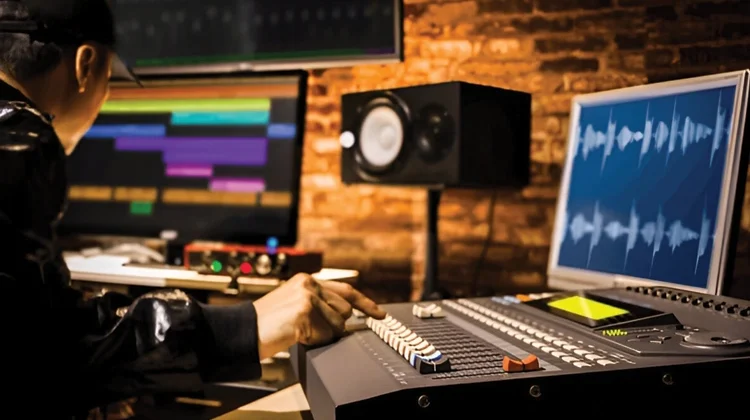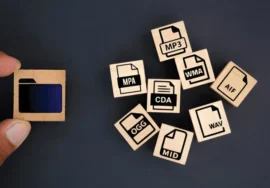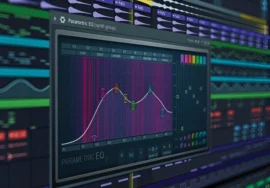
Because Silence is Golden, but Sound is Everything
In the realm of multimedia, audio is often the unsung hero. While visuals captivate our attention, it’s the subtle nuances of sound that can elevate an experience from ordinary to extraordinary. Audio editing is the art and science of manipulating sound and refining raw recordings into polished masterpieces. It’s the process that breathes life into podcasts, adds depth to films, and enhances the overall impact of any audio production.
The Power of Audio Editing
Audio editing is a versatile tool with applications across various industries. From music production to podcasting, film, and television to video game development, audio editing plays a crucial role in shaping the final product.
Key Benefits of Audio Editing:
- Clarity and Coherence: Audio editing helps to cut background noise, reduce echo, and improve overall sound quality, ensuring that your message is clear and easy to understand.
- Enhanced Storytelling: By steering sound effects, music, and voice-overs, audio editors can create immersive experiences that draw listeners in and evoke emotions.
- Professionalism: Well-edited audio signals a commitment to quality and attention to detail, enhancing the credibility of your content.
- Accessibility: Audio editing can add captions and subtitles, making your content accessible to a wider audience, including those with hearing impairments.
Essential Audio Editing Techniques
Audio editing involves a range of techniques, each serving a specific purpose:
- Noise Reduction: Eliminating unwanted background noise, such as traffic, wind, or electrical hum, to improve clarity and focus.
- Equalization: Adjusting the frequency balance of a sound to enhance specific tonal qualities, making it brighter, darker, or more balanced.
- Compression: Reducing the dynamic range of a sound to control its volume and even out its overall level.
- Limiting: Preventing audio levels from exceeding a certain threshold to avoid distortion.
- Reverb and Delay: Adding depth and space to a sound by simulating the effects of a physical environment.
- Time Stretching and Pitch Shifting: Altering the speed and pitch of audio without affecting its overall tonal quality.
Choosing the Right Audio Editing Software
The choice of audio editing software depends on your specific needs and budget. The popular options include:
- Adobe Audition: A powerful and versatile software suitable for both beginners and professionals.
- DAW (Digital Audio Workstation) Software: Options like Ableton Live, FL Studio, and Logic Pro are ideal for music production and advanced audio engineering.
- Free and Open-Source Software: Audacity is a popular choice for basic audio editing tasks.
Mastering the Art of Audio Editing
To become proficient in audio editing, consider the following tips:
- Start with the Basics: Begin by mastering fundamental techniques like noise reduction, equalization, and compression.
- Listen: Develop a keen ear for detail and learn to find subtle imperfections in your audio.
- Experiment and Learn: Don’t be afraid to try new techniques and experiment with different settings.
- Practice: Consistent practice is key to honing your skills and building muscle memory.
- Seek Feedback: Get feedback from others to find areas for improvement and refine your approach.
The Future of Audio Editing: AI and Beyond
As technology continues to evolve, the future of audio editing looks promising. Artificial intelligence (AI) is revolutionizing the industry, offering innovative tools and techniques that streamline workflows and enhance creative possibilities.
AI-Powered Audio Editing Tools
AI-powered audio editing tools are becoming increasingly sophisticated, capable of automating tasks that were once time-consuming and labor-intensive. Some of the key benefits of AI in audio editing include:
- Automated Noise Reduction: AI algorithms can accurately identify and remove background noise, even in complex audio environments.
- Intelligent Audio Restoration: Damaged or degraded audio can be restored to its original quality using advanced AI techniques.
- Real-time Audio Effects: AI-powered plugins can apply real-time effects to audio, allowing for more dynamic and expressive music production.
- Voice Cloning and Synthesis: AI can be used to create realistic voiceovers and sound effects, opening up new creative avenues.
The Role of Audio Editing in Immersive Experiences
Audio editing plays a crucial role in creating immersive experiences, such as virtual reality (VR) and augmented reality (AR). By carefully crafting spatial audio and sound effects, audio editors can transport listeners to different worlds and enhance the overall sense of presence.
Ethical Considerations in Audio Editing
As audio editing technology advances, it’s important to consider the ethical implications of its use. Deepfakes and other forms of audio manipulation can be used to spread misinformation and deceive the public. It’s essential to use audio editing responsibly and transparently.
The Future of Audio Editing
The future of audio editing is bright, with exciting developments on the horizon. As AI continues to advance, we can expect to see even more innovative tools and techniques that push the boundaries of what’s possible. By embracing these advancements and using them responsibly, we can create audio experiences that are both captivating and meaningful.
Conclusion
Audio editing is a powerful tool that can be used to enhance the quality and impact of your audio content. By understanding the fundamentals, mastering the techniques, and staying up-to-date with the latest advancements, you can create audio that resonates with your audience. Remember, sound is not just a backdrop; it’s an integral part of the storytelling process.





